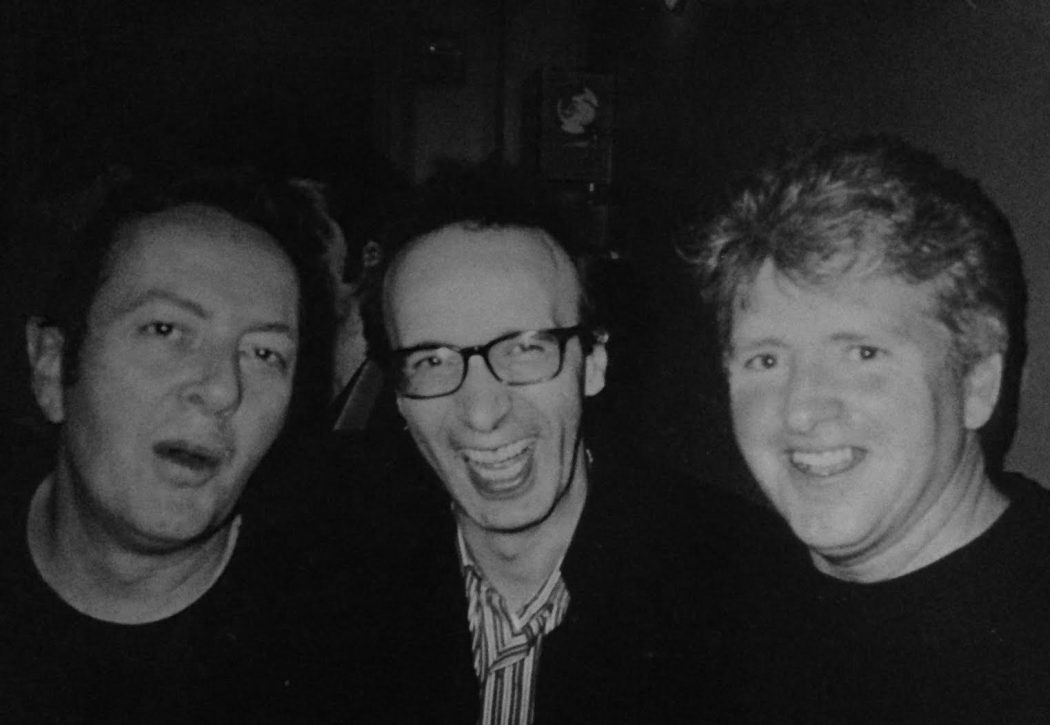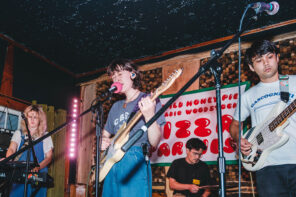Thirty years ago, give or take, Michael Winsch was tending bar in one of East Hampton’s most colorful “dives,” Wolfie’s Tavern, down near Three Mile Harbor. During his 10-year stint at Wolfie’s, between the late nights and many skirmishes, Michael became close friends with a few of the patrons, including another Michael—Michael Swier, who happened to own a bar on the Lower East Side of Manhattan called 2A. (It’s still there, on Avenue A—stop in, have a beer and a shot!)
By the early 90’s the two friends began talking about opening a club in New York City. It was the vision of Michael S. that the place have a studio-quality sound system and perfect acoustics and, of course, a great bar. And in 1993, Mercury Lounge opened its doors. Almost immediately the room got a reputation for being one of the best live music spots in the City, with a buzz that still crackles today. It was also the beginning of a very different phase in Michael Winsch’s life. After all, why run just one extremely busy rock club…when you can have two? By 1998, the partners built the Bowery Ballroom—with over twice the capacity of Mercury Lounge. And soon Bowery became recognized as one of the best places to perform, anywhere.
Of course by this time, the Wolfie’s bartending days were ancient history. And both Michael W. and Michael S. come out to their East Hampton homes to replenish their spirits and listen to, well, the sounds of silence.
We caught up with Michael, first at an art exhibition at Ashawagh Hall in Springs, then at his Mercury Lounge “home” on East Houston St., NYC, to find out more about his journey from the back of the bar to the front of the house in the world of rock ‘n’ roll.
Michael, the obvious question: What on Earth led you guys to believe you could open a successful rock club in New York City? You’d both been in the bar business…
Ha! I guess we just took a leap. Michael and I had become close friends and got to know each other well in the years when I was tending bar at night and running a construction company by day. We trusted our work ethics and we trusted each other. Put our heads down and didn’t look back—myself, Michael, his brother Brian and his amazing wife Margaret, who passed in 2009.
Tell me more about those early days in East Hampton—sounds like you had some transformative encounters.
For those with a long memory, before Wolfie’s was Wolfie’s, it was a place called The Birches, owned and run by Jimmy Demitrack and his wife. Jim is a great musician and they had a live jazz gig several nights a week—some amazing talent sat in on those gigs. They sold the place to a local fisherman and his wife, Billy and Debbie Havens—they called it Harry’s Hideaway, after Debbie’s dad, who helped run the place. Then they sold it to Vinnie Wolfe, and thus, Wolfie’s was born, where I continued working for 7 or 8 years.
I met a ton of great people there, and some not so great people. Among the great ones, my future partner Michael Swier. The locals had a weekly softball game every Sunday, rain or shine, down in Maidstone Park. Michael would bring out a group of his friends, customers and staff for an annual game, which was always good for a lot of laughs.
That’s quite the history.
If you want to go way-way back in time, to the 40’s & 50’s, the place was called Jungle Pete’s, where artists like Jackson Pollack and Willem de Kooning would meet up and hoist a few (too many). Long before I arrived!
Now to the more recent past—you mentioned that from the beginning there was a total commitment to the quality of the sound at Mercury Lounge. How much did that matter?
To the artists and their agents, it meant everything. If these bands were in New York, playing a showcase in front of A&R people, label people, they had to sound great. You don’t get a second shot. Michael had the brilliance to bring in a great sound engineer, Matthew Kasha, and an amazing sound designer, Jim Falconer, to guide us through the construction process. On our stage, bands sounded great—unless they just sucked. We couldn’t help ’em with that!
How many nights a week are there live acts at Mercury?
Seven nights a week with three to four bands a night on average. We’re only closed four days out of the entire year.
Seven nights, four bands a night! You don’t seem to have lost your mind…how do you make it all work?
We’ve been doing it for so long now, everybody knows what has to happen.
Michael, you’ve seen and heard literally thousands of artists on your stages—did you ever see a new group and say, ‘They’ve got it—they’re gonna be big?’
Oh yes, definitely. And more than a few. The Strokes played here just before they blew up. The White Stripes played Mercury early on. The Yeah Yeah Yeahs, Interpol. The Black Keys played here before they made it to the arenas—their agent loved the room ‘cause it sounded great. I could go on…
By all means…
The National—I thought they were awesome, from the beginning. And My Morning Jacket. It was pretty cool to see these artists just as they were about to take off.
With Mercury Lounge booked every night, why did you and Michael decide to build another venue? You’re both so hands-on…did you think you could handle the pressure?
We did. We had almost five years under our belts before doing Bowery Ballroom, so we knew the drill, backward and forward. Plus, the record industry was changing fast. Bands realized they had to perform live to build a following if they were going to have a career at all. We saw a niche between the smaller club (Mercury) and the bigger halls. We wanted Bowery Ballroom to fill that niche. Arcade Fire has played there. The band Fun. Queens Of The Stone Age. Foo Fighters. R.E.M. Patti Smith…a very long list, really, of amazing artists.
I know you’ve got your ‘escape’ home in East Hampton, Michael. Where do you live in New York when managing this rock stage life you live?
My crash pad above the Mercury Lounge.
You mean the same building?
Yes.
What, three flights up…where you can’t hear the noise?
One flight up—I can hear everything.
Jesus.
Back in the early days I was pretty much couch surfing and slumming it at the (old) Bowery Hotel, $35 a night, bathroom down the hall. Six months of long days and nights—we had a lot of help from our friends and I talked my mom into loaning me some capital. Sometimes you don’t know what you’re getting into until you’ve gotten into it. Fortunately, we made it work.
Are we there yet—with two amazing clubs in the great New York, New York?
Well, not quite. In 2015 we opened Teragram Ballroom in LA—but Michael Swier is more involved in that than I am (the name is his wife Margaret’s, spelled backwards—in honor of her). I like to be in this part of the world, close to my son. Oh…and we may do another place—but it’s very early stages. Stay tuned.
Tell me a highly classified story about something off the hook that happened on or back stage in the past.
Okay, but I can’t allow you to reveal the name, because it involved an extremely famous, multi-Grammy winning artist.
Okay, it won’t be revealed. Word.
This great artist, whose name cannot be named, got so stoned in the green room that the sound guy and I never thought he’d make it to the stage, much less perform. So I helped him into the spotlight…and somehow, by the grace of the musical gods, as soon as he took the mic in his hand he gave one of the best performances I’ve ever seen at Mercury.
Holy shit!
Yea, no kidding. Crazy night.
See you out east?
If you can find me…
Stay in the loop with Mercury Lounge over at their website + on their Instagram.










